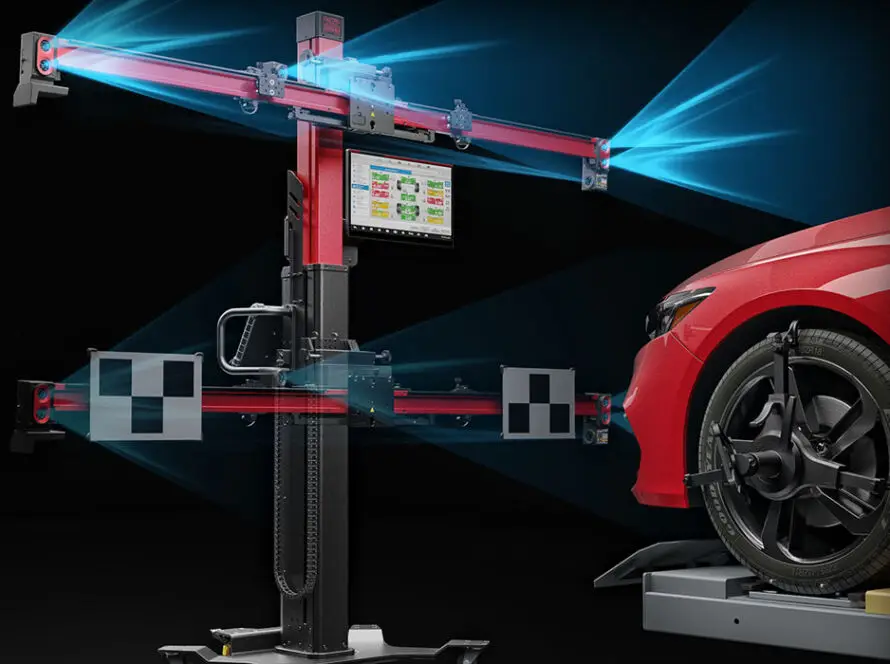Advanced Driver Assistance Systems (ADAS) have significantly transformed the automotive industry, making vehicles safer and more intuitive. While ADAS is a relatively recent innovation in mass-market vehicles, its development spans several decades. From early conceptual safety features to today’s sophisticated semi-autonomous driving aids, the evolution of ADAS highlights the industry’s continuous pursuit of road safety.
Early Foundations of ADAS (1950s – 1980s)
The roots of ADAS can be traced back to the mid-20th century when automobile manufacturers and engineers first envisioned technology-driven safety enhancements. Some of the earliest advancements included:
-
Cruise Control (1958): Chrysler introduced the first adaptive speed-maintaining system, allowing vehicles to maintain a steady speed without constant driver input.
-
Antilock Braking System (ABS) (1970s): Initially developed for aircraft, ABS was later introduced in passenger vehicles to prevent wheel lock-up during emergency braking.
-
Electronic Stability Control (ESC) (1980s): This system was designed to assist drivers in maintaining control during skids or sudden turns by selectively applying brakes to individual wheels.
Though rudimentary, these systems laid the groundwork for the complex ADAS technologies seen today.
The Rise of Sensor-Based Safety Features (1990s – 2000s)
During the late 20th century, technological advancements in radar, cameras, and sensors led to the development of more sophisticated driver assistance features. Key milestones included:
-
Adaptive Cruise Control (1992): Mitsubishi introduced the first radar-based adaptive cruise control system, allowing vehicles to automatically adjust speed based on surrounding traffic.
-
Parking Assistance (2003): Toyota and Lexus pioneered early parking assist systems using sensors to guide drivers into tight spaces.
-
Lane Departure Warning (2004): Honda introduced the first lane departure warning system, using cameras to detect lane markings and alert drivers if they unintentionally drifted.
These innovations marked a significant leap in ADAS, transitioning from passive safety features to active driver assistance.
ADAS in the Digital Age (2010s – Present)
With the advancement of artificial intelligence, machine learning, and high-resolution imaging, ADAS became more accurate and widely adopted across vehicle models. Some key developments during this period include:
-
Automatic Emergency Braking (AEB) (2010s): Many automakers began incorporating AEB systems that use radar and cameras to detect potential collisions and automatically apply the brakes.
-
Blind Spot Monitoring (2013): Radar-based detection systems became common, warning drivers of vehicles in adjacent lanes.
-
Autonomous Parking (2015): Tesla and BMW introduced fully automated parking systems that could maneuver vehicles into spaces with minimal driver input.
-
Highway Assist and Semi-Autonomous Driving (2020s): Manufacturers like Tesla (Autopilot), Mercedes-Benz (Drive Pilot), and General Motors (Super Cruise) developed systems capable of limited hands-free driving under certain conditions.
The Future of ADAS
As ADAS continues to evolve, its integration with artificial intelligence and vehicle-to-everything (V2X) communication will enable even greater levels of automation. Future advancements may include:
-
Fully Autonomous Vehicles: Moving from Level 2 and Level 3 autonomy (partial automation) to Level 4 and Level 5, where vehicles can operate entirely without human intervention.
-
Enhanced AI Decision-Making: AI-driven ADAS will improve real-time decision-making, reducing accidents caused by human error.
-
Smart Infrastructure Integration: Vehicles will communicate with traffic lights, road signs, and other infrastructure to improve traffic efficiency and safety.
Conclusion
The history of ADAS demonstrates how innovation has continually shaped vehicle safety and driving convenience. From early cruise control systems to today’s AI-powered semi-autonomous driving features, ADAS has become a crucial component of modern transportation. As technology advances, ADAS will play a vital role in the transition to fully autonomous vehicles, ensuring safer roads for everyone.




